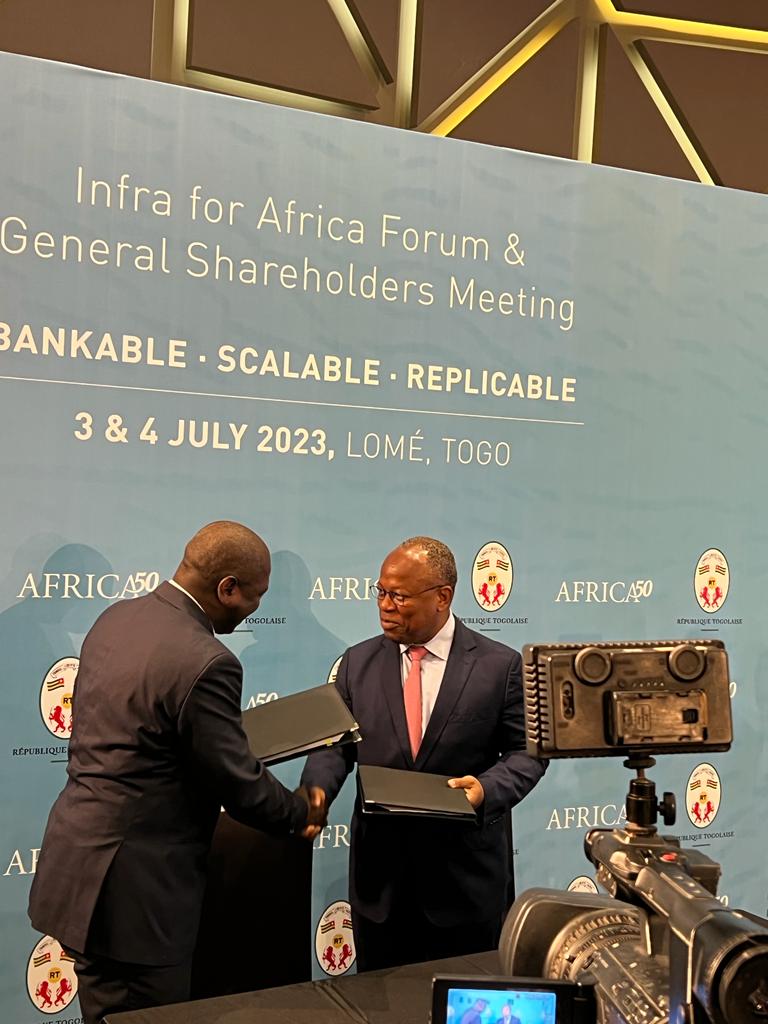
By Buba Gagigo
Seedy Keita, Minister of Finance of the Gambia, announced on CNBCAfrica that the government of the Gambia has signed a $100 million agreement with Africa50, an infrastructure investment platform founded by the African Development Bank (AfDB) and African states. The agreement is to manage and operate the Senegambia Bridge, a major crossing point across connecting the South and North banks of the Gambia River.
This arrangement is part of Africa50’s Asset Recycling Programme. Africa50’s Asset Recycling Programme is an innovative initiative that allows governments to monetize existing infrastructure assets by leasing them to the private sector. The funds received from these leases can then be reinvested in other priority projects. Under the proposed scheme, Africa50, together with a technical partner, will manage and operate the Senegambia Bridge under a public-private partnership (PPP) arrangement.
“We have signed a joint development agreement whereby Africa 50, will now pay the government of the Gambia forward current terms 100 million dollars, the value of the bridge as we speak, and then they will manage the concession on the management of the tolls. And the concession is for a period of 25 years, or a target IIR for investors of 15%, whichever comes first.
“So, this in a nutshell is an innovative financing mechanism whereby public assets are now put in private management under asset recycling and the cash flows that are coming from there will be used towards generating additional infrastructure assets. So that’s what we call asset recycling. And that was the agreement we have signed today,” the finance minister told CNBC Africa after the signing ceremony.
The finance minister announced that the government has signed two agreements with Africa50 as part of the asset recycling of the Senegambia Bridge. The first agreement, the “joint development agreement,” sets out the terms and conditions for the collaboration between the two parties. The second agreement, the “heads of terms agreement,” outlines the key principles that will guide the asset recycling process.
After the signing ceremony, economist Nyang Njie said; “After listening to the Finance Minister deliberate on the disposal of the bridge, I concluded that the concept of Asset Disposal is a great idea as it leverages our existing public infrastructure/asset to raise capital to engage in other infrastructure projects rather than debt financing. I therefore applaud the Minister and his team for the innovative way to finance projects.
Mr. Njie however, said he has reservations on the valuation as it is on the ‘low’ side. He said the value of the bridge is ‘just’ not the cost of the bridge but said current and future economic potentials inherent in the existence of the bridge.
“Secondly, the utilization of the funds given the poor procurement system. We have risk getting the funds to the wrong company at an inflated price for contracts to be executed. The bridge should have been bundled with the ferries and the new bridges in the upper river to create a more appealing value proposition that could have fetched a better price. The dissemination of information regarding the transaction was scanty at best, and the government should disclose to its primary stakeholders (we the people) in a timely and transparent manner,” he concluded.
The Senegambia Bridge was opened in January 2019. The bridge is an economic and strategic link connecting the northern and southern parts of both The Gambia and Senegal. The construction of the bridge, along with two border posts, were largely financed by the African Development Bank Group and were inaugurated by Presidents Adama Barrow of The Gambia and Macky Sall of Senegal.

